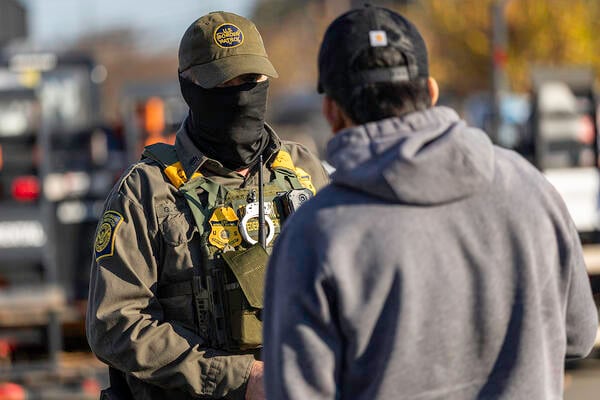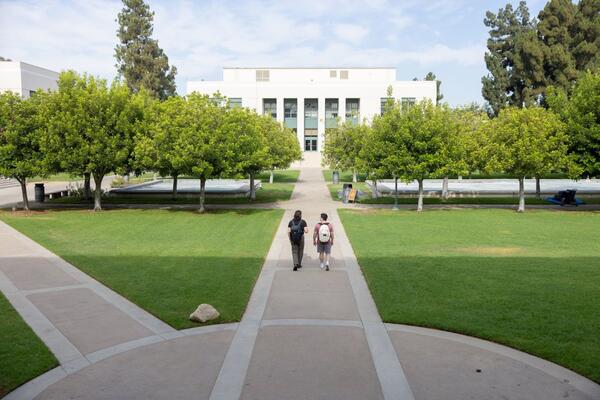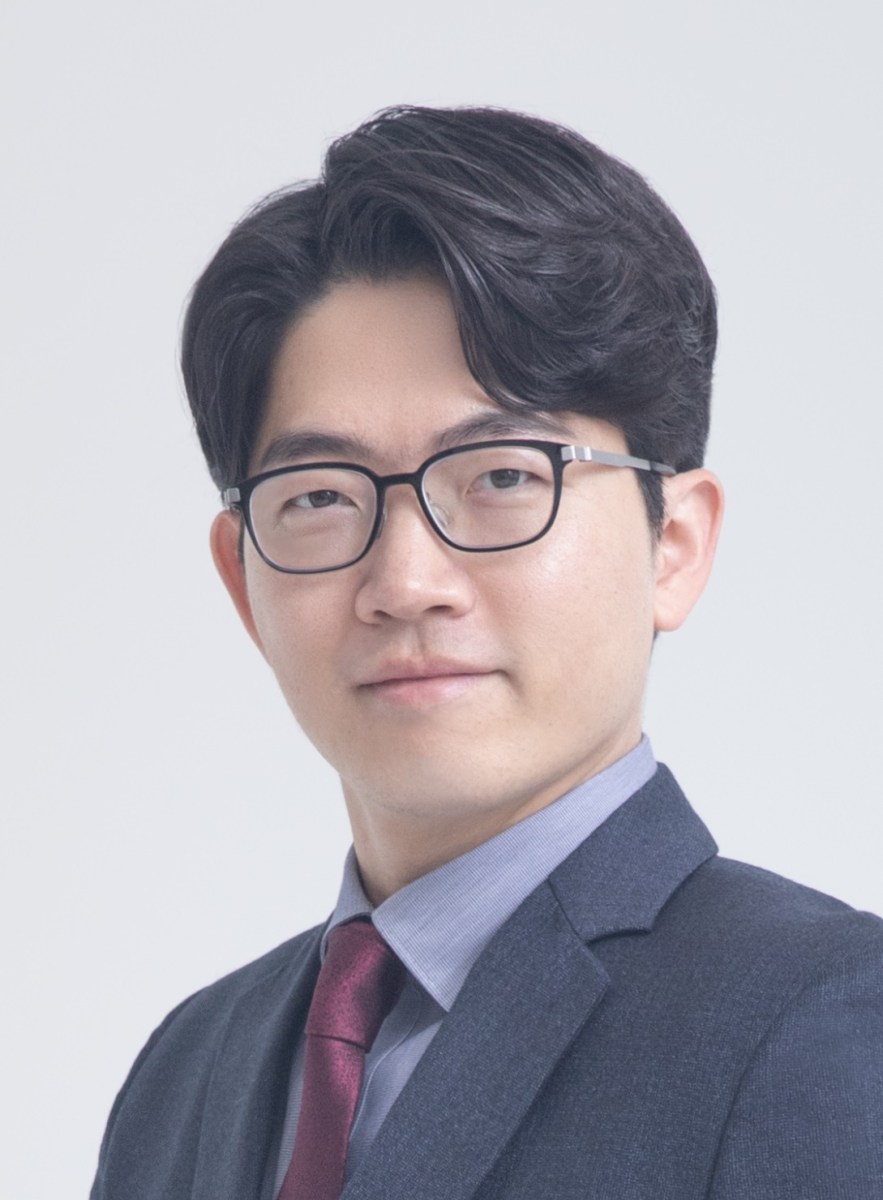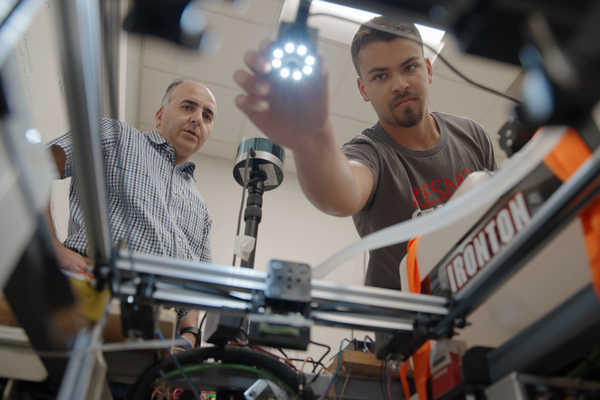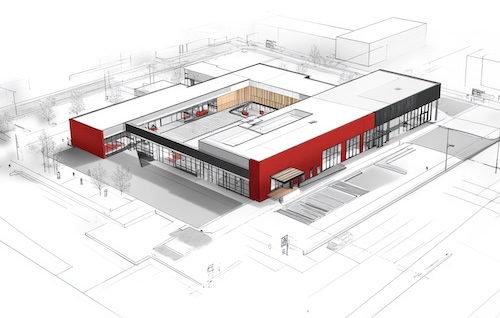North Carolina campus leaders are urging international students and staff to take precautions and promising to protect student privacy amid a surge of Immigration and Customs Enforcement raids in the Raleigh, Durham and Charlotte areas. But some students and employees fear campuses aren’t doing enough to protect them after the U.S. Department of Homeland Security boasted upwards of 250 arrests in and around Charlotte on Wednesday.
North Carolina State University’s executive vice chancellor and provost, Warwick Arden, sent a memo to deans and department heads on Tuesday, offering guidance on how to handle any brushes with federal and state agents in Raleigh.
He stressed that the university follows all federal laws—including the Family Educational Rights and Privacy Act, so administrators shouldn’t release information about students or staff without consulting the Office of General Counsel. He also advised all international students, faculty and staff to “carry evidence of their immigration status with them at all times,” including their passports if they leave the Raleigh area.
“I want to assure you that we are closely monitoring developments that may impact our community,” Arden wrote in the memo.
Duke University administrators sent a similar message to students and staff on Wednesday, recommending that international students and employees carry travel documents “at all times” and promising to safeguard student privacy in accordance with federal law. They also told employees to call Duke police if federal agents requested information or sought to enter nonpublic areas.
Sharon L. Gaber, chancellor of the University of North Carolina at Charlotte, released a memo on Monday, which was updated Thursday, reminding students and employees of the university’s protocols if they encounter anyone who identifies themselves as federal law enforcement. She urged them to call campus police, who “will work with the Office of Legal Affairs to review and verify any subpoenas or warrants that may be presented.”
The University of North Carolina at Chapel Hill’s interim executive vice chancellor and provost, James W. Dean Jr., also put out a message to students and staff on Tuesday, acknowledging “anxiety” caused by the presence of ICE officials and encouraging students and employees “to learn more about their rights and available resources.”
Dean emphasized that the university “complies with all federal and state laws and guidance”; ICE has the right to approach individuals in public spaces, he said, but they need a warrant to access classrooms, offices or dorms.
He also said that while FERPA prevents the university from sharing a student’s class schedule and immigration status, their name, address and phone number are public information unless a student previously told the registrar not to share such details. He directed concerned students to the dean of students for “individual supports and services.”
Fears and Concerns
Nearby raids have heightened fear and anxiety among students.
Rumors have been swirling on social media about U.S. Customs and Border Protection agents and vehicles sighted near North Carolina State and UNC Charlotte, with students and nearby residents alerting each other about unrecognized cars near campus. Ojo Obrero, an ICE activity tracker created by the Latino and immigrant advocacy organization Siembra NC, showed several sightings of CBP agents and vehicles reported within two miles of UNC Charlotte.
“The University has been monitoring available information since Customs and Border Protection arrived in Charlotte and had no confirmed reports of CBP on campus; however, they have been in the area,” Christy Jackson, deputy chief communications officer at UNC Charlotte, said in a statement to Inside Higher Ed.
North Carolina State Police have likewise found “no credible sightings of federal agents on campus” at North Carolina State, Mick Kulikowski, the university’s director of strategic communications and media relations, wrote to Inside Higher Ed.
Despite memos and reassurances, students and staff expressed frustration that campus leaders’ statements didn’t make a stronger commitment to resisting federal immigration enforcement efforts.
A joint statement from the American Association of University Professors chapter at UNC Chapel Hill, UE Local 150 and the student organization transparUNCy slammed their administration’s response as “tepid” and “inadequate to meet the moment of fear and uncertainty.” The groups called on university leaders to “do all in their power to deny CBP access to our community,” because “example after example has shown that CBP is acting above the law.”
Administrators have “instead taken the cowardly approach of saying they’re just going to follow the law,” said Michael Palm, president of the UNC Chapel Hill AAUP chapter. “Everyone that I know who works or studies at UNC understands that we have to protect ourselves, because no one in the administration will help with that.”
Palm said he and other faculty members are allowing fearful students to attend class remotely after some of his colleagues found them “afraid to come to class, afraid to leave home, if they’re on campus, afraid to leave their dorms.”
“There has been a real network effort of mutual care to make sure that those students are not just not punished for missing class or excluded from class but also to make sure that they’re getting food, medicine and other supplies,” he said, “and human contact and support so they don’t feel even more isolated and afraid than they already, understandably, do.”

